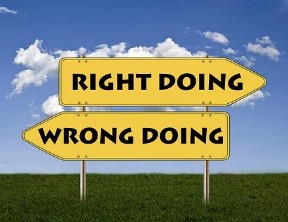
A Common Problem When Leaders Disagree on Strategy
After significant investments of time and money on strategy retreats, too many companies report failing at strategy execution. A recent McKinsey survey of 800 companies found that a whopping 77 percent of strategic decisions were made outside of the original strategic plan. Similarly, executives tell us repeatedly that their finely crafted strategic plans are not being implemented at the quality or speed that they expect.
What’s Causing the Disconnect between Strategic Planning and Strategy Implementation?
Is the strategy not clear enough, not perceived to be equal to the challenge, or not supported by adequate resources to truly succeed? Surprisingly, sometimes the strategic plan doesn’t have a chance because top leaders disagree on strategy. Even though their high-level corporate goals may be aligned, the specific strategies and tactics to achieve them are often in conflict.
Six Tips on Moving Forward When Top Leaders Disagree on Strategy
Here are some tips on how to coalesce your leadership team so that everyone is pulling in the same direction:
Once your leadership team is aligned on the strategic vision, company mission, core values, success metrics, and big strategic bets, alignment cannot stop there. You must also agree on the roadmap to achieve these objectives — and, critically, define how work will be carried out in a way that reflects the organization’s culture. This ensures that strategy is not only planned but executed effectively, with clarity, cohesion, and a shared sense of purpose.
If you are operating within a hierarchy, your role may be to clearly articulate your perspective and then yield to the decision-making authority. Among peers, take a step back for self-reflection: ask why you are committed to a particular approach, consider whether alternative plans could also succeed, and explore opportunities for compromise or creative third options. This reflective approach fosters collaboration while keeping the organization’s goals front and center.
The time to agree to disagree is at the beginning, not the middle or the end.
Do not get lost in analysis paralysis; strive to make decisions, move toward action, and be prepared to learn as soon as it makes sense.
Explicitly measure commitment levels and do what it takes to align your leadership team.
The Bottom Line
Whenever more than one person is involved, there is bound to be some degree of conflict. How companies resolve disagreements around strategic planning is a measure of how successful they will be at strategy implementation. Is your leadership team set up to resolve conflict and move forward as a cohesive team?
To learn more about what to do when leaders disagree on strategy, download 7 Ways to Stress Test Your Strategy to see where you stand

Tristam Brown is a seasoned business consultant and organizational development expert with more than three decades of experience helping organizations accelerate performance, build high-impact teams, and turn strategy into execution. As CEO of LSA Global, he works with leaders to get and stay aligned™ through research-backed strategy, culture, and talent solutions that produce measurable, business-critical results. See full bio.
Explore real world results for clients like you striving to create higher performance